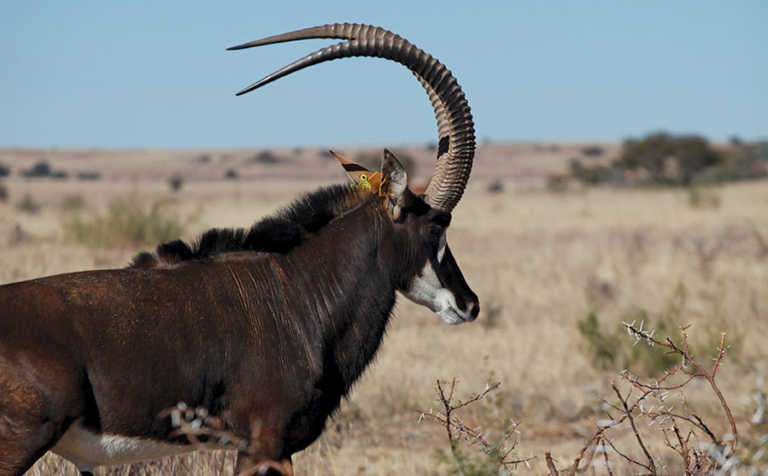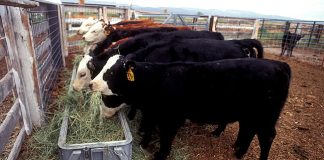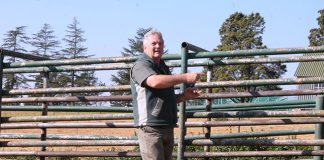
Photo: Gerhard Uys
A major challenge facing conservation today is the difficulty of bridging the science implementation gap. This is according to conservationists Dr Pieter Olivier, Andrew Purdon
and Michael Mole of MAP Scientific Services (MAPSS).
Although more raw ecological data is collected now than ever before, it is complex and arduous to interpret, and the process is time-consuming and expensive.
It is equally difficult to turn this information into practical, evidence-based conservation
management actions, they say.
The three researchers, who once worked together at the University of Pretoria, founded
their company to bridge this gap. “We wanted to solve problems in the real world and see
implementations that make a difference. We didn’t have a clear idea of the way forward,
but began by designing a course for wildlife managers and ecologists based on data
analytics,” says Purdon.
Analysing data
For example, many game reserves use tracking devices and collect vast amounts of data.
“A collar may collect data every half an hour for two to three years,” says Purdon.
“This is useful; it tells you the location of the animal as well as the environmental factors that influence how it uses the reserve. Managers can then make informed decisions on where to place water points, for instance, or quickly find out if an animal has broken through a fence. However, analysing and interpreting this data can be difficult.”
Camera traps are another common example of underutilised technology. These are often employed only to monitor the species present in the reserve, whereas they could be
used to achieve a great deal more.
The course originally developed by Olivier, Purdon and Mole focused on interpreting the
information that wildlife managers find useful. For example, they demonstrated
how to plot collar data and calculate home ranges, and how to use satellite imagery to extract environmental variables such as tree canopy cover, distances from water, and changes in water availability over time.
They also showed managers how to analyse long-term monitoring data such as
game counts and changes in vegetation, fire frequency and water distribution.
Automatic analysis of wildlife data
The three subsequently saw the potential of developing software that automated
analysis to make management decisions easier.
Their software program, MAPSS Wildlife Solutions, is a leap forward for ecological
monitoring, biodiversity and landscape assessments, as well as data management and
analysis for conservancies, conservationists and game farms.
“Data is often collected 365 days a year by reserve staff, and includes animal mortalities, births, locations, and events such as animal breakouts,” says Purdon.
“We quickly realised that storing and analysing it correctly to gain actionable insights is a common challenge for most wildlife managers.
“We were inspired to develop a platform that allows a user to access, visualise and interpret data in a user-friendly and meaningful way.”
Ultimately, the program makes management decisions more evidenced-based, efficient and cost-effective.
Insights made easy
The software enables insights to be given at the click of a button.
“Imagine a wild dog,” says Olivier.
“You have collar data for it, the animal has been captured on camera traps, and its behaviour has been observed through sightings. Now you can push a button and the home range of the animal immediately displays on a map of data collected over years.”
The data can be printed or exported to a spreadsheet.
Mole adds that consultants normally have to be hired to provide insights. Now, data collected over years but not properly analysed, can be interpreted easily by the software and used effectively.
The system allows for constant data input, so management decisions can be made in real time.
Wildlife managers can get data to enable them to allocate water resources accurately, receive timely warnings of population densities so that animals can be caught and sold, or receive the location of wildlife ‘hotspots’ so that tourists can be taken there.
A key advantage of the MAPSS Wildlife Solution is its centralised structure. Where data has been collected over a period of, say, 20 years, many researchers or rangers may have been involved in collecting or managing it.
This means that research is stored with different individuals in different locations. MAPSS Wildlife Solutions collects data from multiple sources, centralises all insights and makes it accessible and easy to interpret. Managing conservation areas or game farms becomes considerably simpler.
The software also allows for alarms or notices to be texted to managers once a goal or limit for any criterion has been met. For example, if a collared animal breaks out often, a warning can be sent to a manager as soon as it nears a fence.
“Managers set their own parameters and the MAPPS team builds it into their specific program. You don’t have to write the code or do the analysis; it’s all automated. Graphs, tables and maps can be exported into a report, which means less time spent on report writing,” Olivier says.
The platform
The ease of use of the MAPPS software becomes evident only once it is tested. The system is cloud-based and stored on Amazon. It is accessible from any cell phone, computer or tablet, and the system has a secure login.
A drop-down menu enables field observations to be sorted according to dates. It also allows a user to select a species and choose the specific observation, such as camera trap information, GPS field data, collar data, kills, home range, or actual observations.
Details on every animal can be accessed, along with data on its parentage, birth date and fate (alive, dead or missing).
The software can also provide summaries on animals based on any of their characteristics, such as sex, age or pride/pack/herd.
It even measures the effort put into management, and tracks vehicles and the time they spend on specific activities. This can be linked to management costs.
Olivier, Purdon and Mole are currently developing a mobile app that links to the MAPSS Wildlife Solution so that field data, such as animal sightings and poaching incidences, can be collected on a smartphone. The data can then be uploaded automatically to the platform, stored and visualised.
Collecting field data is arduous work, the team emphasises, and the MAPSS Wildlife Solution empowers users to get the most out of their hard-won data, ultimately benefitting conservation.
Phone Dr Pieter Olivier on 084 612 7724, or visit [email protected].











